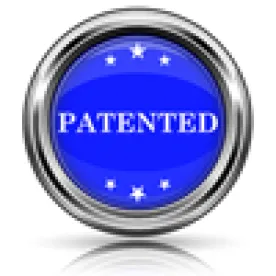In a final written decision of a covered business method (CBM) patent review, the Patent Trial and Appeal Board (PTAB or Board) found the challenged claims unpatentable on multiple grounds and clarified that, for the purpose of determining whether claims are ineligible as abstract ideas under Alice, the absence of complete preemption does not necessarily demonstrate patent eligibility. Care N’ Care Insurance Co. and TriZetto Corp. v. Integrated Claims Systems, LLC, Case No. CBM2015-00062 (PTAB, July 28, 2016) (Jung, APJ).
Care N’ Care filed a CBM petition against a patent owned by Integrated Claims. The challenged patent was directed to “an attachment integrated claims (AIC) system for preparing and processing forms with integrated attachments,” which were described as being “digital insurance claims including Prior Approval Claim (PAC) Applications containing both a text form and an integrated digitized attachment.” The CBM petition included grounds of invalidity based on anticipation, obviousness and ineligible subject matter.
The PTAB found that because one of the challenged claims recited a method “wherein the unitary data stream comprises an insurance claim form” the claimed method was “used in” the administration or management of insurance claims and therefore within the penumbra of “financial product or service” under § 18(d)(1) of the AIA. As for the “technological invention” carve-out in § 18(d)(1), the PTAB considered “whether the claimed subject matter as a whole recites a technological feature that is novel and unobvious over the prior art; and solves a technical problem using a technical solution.” In finding the carve-out inapplicable, the PTAB agreed with the petitioner that the claims as a whole did not recite a novel and unobvious technical feature, and that the invention was directed to a business, rather than a technical, problem.
The PTAB next analyzed the subject matter eligibility of the challenged claims under the Supreme Court of the United States’ two-part Alice test. Addressing the first part of the test, the PTAB determined that the subject matter of the challenged claims, when considered as a whole, was directed to the abstract idea of transmitting or copying information from a source to a destination.
The patent owner creatively argued that because the claims did not fully preempt the alleged abstract idea, the claims were directed to patent-eligible subject matter. As support, the patent owner provided examples of methods falling outside the scope of the claims and also pointed to its complaint in the parallel litigation, which did not allege that any system or method would infringe the challenged patent. The PTAB did not agree, noting that the US Court of Appeals for the Federal Circuit explained in Ariosa Diagnostics (IP Update, Vol. 18, No. 12) that “[w]hile preemption may signal patent ineligible subject matter, the absence of complete preemption does not demonstrate patent eligibility.”
Next, citing to the Federal Circuit’s recent Enfish decision (IP Update, Vol. 19, No. 6), the PTAB explained that the first step of the Alice test “cannot simply ask whether the claims involve a patent ineligible concept,” and that “some improvements in computer-related technology when appropriately claimed are undoubtedly not abstract, such as a chip architecture, an LED display, and the like.” The PTAB also noted that according to the Federal Circuit, the “first step in the Aliceinquiry . . . asks whether the focus of the claims is on the specific asserted improvement in computer capabilities . . . or, instead, on a process that qualifies as an ‘abstract idea’ for which computers are invoked merely as a tool.” Here, the PTAB determined that the asserted improvement provided by the challenged patent’s invention was not an improvement in computer functionality but rather was simply an improvement to data processing performed by a common computer system.
Moving to the second step of the Alice test, the PTAB found that the claim limitations, considered individually and as an ordered combination, failed to provide the “something more” that would imbue the claims with patent-eligible status. The PTAB also separately analyzed the claims under the machine-or-transformation test, which under Ultramercial provides “a useful clue in the second step of the Alice framework.” Here, the PTAB determined that any computer or network elements recited in the claims were merely conventional or used for post-solution activity, and thus the claims failed to meet the “machine” prong of the test. Similarly, the PTAB found the claims lacking any “transformation” that might meet the other prong. For these reasons, the PTAB found the claims invalid as directed to ineligible subject matter.
As separate grounds of unpatentability, the PTAB found all of the challenged claims anticipated or obvious.




 />i
/>i

